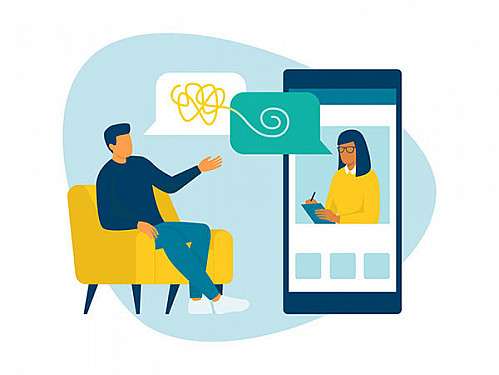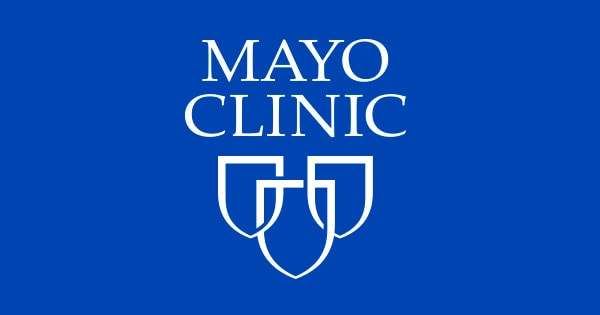The BACP warned this month that counselling could be removed from the NICE Guidelines for Depression, leaving NHS patients only access to CBT. What could this mean for the mental health of the UK?
Favouring cognitive behavioural therapy (CBT) over counselling is not a new thing.
The NICE guidelines for Depression already recommends CBT as its frontline therapy. While they ask therapists offering counselling to discuss with their patients how uncertain the effectiveness of counselling can be.
What’s the difference between CBT and counselling?
Both CBT and counselling are used to support people with similar issues like anxiety and depression. And they’re both forms of talking therapy and can be used for short term work.
But while CBT therapists and clients work together to change a client’s behaviour or thinking patterns, counselling is less directive and through listening, empathy, encouragement and challenge counselling hopes to help the client to better understand themselves and find their own solutions to cope with the issues that face them.
Arguably someone could equally benefit from being supported by both interventions at different stages of their lives.
What does the NHS currently offer?
The NHS currently runs the Improving Access to Psychological Therapies (IAPT) programme which offers CBT first and counselling after.
First a patient is assessed by a psychological wellbeing practitioner who mostly go on to treat patients using CBT. It is only then if patients are severe at referral or if they do not respond to CBT are they stepped up to receive counselling.
Two years before IAPT was rolled out the Depression Report argued that services were not implementing therapies according to NICE guidelines.
IAPT was brought out to fix this. It purported to be cost effective and evidence-based. At the time there was also a huge need for quick return on investment, with savings on benefits hoping to balance the costs of any programme.
What’s so good about CBT?
CBT is easy to prove and also easy to prove that it’s cost effective.
The benefits of counselling are harder to show. Counselling is collaborative and non-directive so benefits can appear long after sessions have finished. Patients may suddenly start to make links and gain insights at a later date, making it harder to prove its effectiveness.
Research into counselling is catching up
There is plenty of evidence out there that shows the benefits of CBT for treating anxiety and depression. But research looking into counselling is starting to catch up.
A recent analysis of data collected from 33,243 patients across 103 IAPT services in the journal BMC Psychiatry this year found that the type of therapy someone attended did not predict an improved PHQ-9 score, a screening tool for mental health.
The researchers Jo Pybis et al said: “It is apparent from the findings presented here that counselling is not inferior to CBT.”
What if counselling was removed from the NICE clinical guidelines?
The British Association for Counselling and Psychotherapy (BACP) say that the impact of removing counselling from the NICE guidelines for depression could be ‘disastrous’, adding that it could lead to counselling no longer being offered on the NHS and restricting patient choice and depriving people of a proven intervention.
Julia Britton, Director of charity Open Door, a community service for young people, said: “Easily accessible counselling and psychotherapy has been essential to the Open Door service over many years and we have helped thousands of young people through evidence-based interventions.
“There is ample evidence to suggest the efficacy of counselling in the treatment of depression and anxiety and it would be a huge loss to young people if it were to be removed from the NICE guidelines and their access to counselling diminished.”
Michaela McCarthy, MBACP, Managing Director of The Awareness Centre that provides NHS IAPT programmes said: “If NICE did downgrade, or remove, counselling from their guidelines for treating depression it would seriously restrict the range of help available to people.
“Counselling is not necessarily a “quick fix” but a lot can be achieved for a client with depression in six or 12 weeks, such as psych-education and reducing feelings of isolation, or of being unheard and unseen, which can help people to adjust their mood for the better and recover.
“If NICE did downgrade or remove counselling for depression from the services offered it would be denying a client group, which is already seriously under-resourced, of a valuable way of managing their mental health.”
With evidence for counselling catching up with CBT it doesn’t make sense any more to pit one type of therapy against the other. Both can help people and Mental Health Today believes that both should be invested in.
What are your thoughts? Do you agree?
As per Mind, “1 in 4 people will experience a mental health problem of some kind each year in England. 1 in 6 people report experiencing a common mental health problem (like anxiety and depression) in any given week in England.”
The number of people suffering from mental health problems is increasing, and the reason behind this can be any from financial difficulties to breakups and divorces to the death of their loved ones. With the increasing mental health issues, people’s need for psychological therapy like CBT and counselling is also increasing. Some of the most common mental health conditions are depression, PTSD (Post-Traumatic Stress Disorder), panic disorder, obsessive-compulsive disorder and anxiety disorder.
If you are reading this blog, it means either you or someone belonging to you is suffering from mental health issues, or you are looking forward to building a career in CBT or counselling. To move forward with either the treatment or the career, you need to know the difference between CBT and counselling.
Give this blog a read to know how CBT is different from counselling.
What is Counselling?
Counselling is a talking therapy where a trained counsellor will evaluate the patients’ mental health by having a detailed conversation with them. In these sessions, patients share their experiences, views, and problems and get help in managing their difficult emotions.
What is Counselling Used For?
Counsellors use counselling to help people deal with mental health problems. Mental health problems include depression, eating disorders, physical health conditions (infertility), complex life events (breakup, work pressure), difficult emotions (low self-esteem, anger) and anxiety.
Counselling seeks to make people feel heard and understood and think about having their feelings validated. By talking to the patients about their feelings and past experiences, and counsellors try to understand the underlying issues behind their mental health problems. Counsellors attempt to read their clients to provide a secure environment in which they can explore their deepest feelings, which helps the counsellors find out the root of the problems the patients face.

What is the Training for Counselling?
A counsellor is a trained individual whose primary job is to listen to patients and give advice on their problems. They are trained to listen, show empathy, keep a non-judgemental attitude, and have patience and calm.
Professional counsellor education lasts three to five years and can be obtained through a diploma or a degree programme. A minimum amount of client hours obtained during a work placement is required for qualification.
The course begins with an overview of counselling. This can take up to three months, but if you have prior experience, you may be able to skip this step. Then you apply for a one-year certificate in counselling skills, followed by a two-year diploma in counselling (two to three years). Alternatively, you might obtain training by enrolling in a university counselling programme. (TheGuardian.com)

What is CBT?
CBT (Cognitive Behavioural Therapy) is a highly structured psychological therapy that focuses on changing automatic negative thoughts, which can affect persons’ mental health. It finds out the toxic thoughts negatively influencing the lives of their patients and tries to fix them with positive and productive thoughts.
What is CBT Used For?
Therapists generally use CBT for treating mental health issues like anxiety, depression, OCD (Obsessive Compulsive Disorder), eating disorders, phobias and PTSD (Post Traumatic Stress Disorder). Its aim is to change the way a person thinks. Our thoughts can influence the way we feel. So, changing the way we think can also change the way we feel about ourselves, which helps to deal with our mental health issues.
Negative feelings cause harm to our mental health. CBT is used to help people improve their negative attitudes toward themselves and their surroundings. CBT is used to change the Negative way we think about ourselves or our surroundings.
What is the Training for CBT?
According to BABCP, “To train in CBT, your background should include working in health or social care, and a degree or equivalent level of academic achievement. People training in CBT will already have an understanding of research, theories of human development, human problems and distress, as well as social context, for example.”
Subscribe Now and Get Free Access to Over 700 Courses at Just £99/Year. That’s Less Than £2 Per Week & Less Than £1 Per Course
Get Free Access Now
The BABCP recognises some specific mental health backgrounds. These are called “Core Professions”. The core professions list include- Arts therapist, Counselling, Medicine, Occupational Therapy, Psychotherapy, Registered Nurse, Social work, Postgraduate Doctorate in Clinical/Counselling Psychology, Educational Psychology, Health Psychology, and Forensic Psychology. The professions mentioned here have a considerable amount of mental health training and meet accreditation requirements for knowledge and experience in mental health.
What is the Difference Between CBT and Counselling?
CBT focuses on the patient’s current situation, attempting to change a habit or thought pattern. It enables patients to recognise and investigate how their thoughts influence their actions and then change their negative thinking habits. Meanwhile, in counselling, counsellors are more interested in the patients’ previous experiences. As a result, counsellors frequently require patients to delve deeply into their feelings in order to determine the root cause of their problems. Counsellors are responsible for providing a secure environment for patients to talk about and, ultimately, understand their complex feelings.
6 Differences Between CBT and Counselling?
CBTCounsellingDefinitionCBT aims to change the negative and harmful thought patterns and behaviours, which gradually helps the patients deal with their mental health issues.Counselling involves listening to the patients carefully and empathetically, finding the reasons behind the mental health problems, and finally working on them.TargetCBT aims to change the thinking patterns of the patients.Counselling works by listening to the patients with empathy while encouraging them.TimeIt is brief and time-constrained.Counselling can take months or even years to get the desired result.FocusCBT focuses on the present problems.Counselling focuses on the previous life experiences of the patients.StructureIt is highly structured.Counsellors usually go with the flow of the conversation.PurposeThe primary purpose of going for CBT is to change how you behave or think.The primary purpose of going for counselling is to get good advice.ResultA CBT therapist will emphasise helping you to become your own therapist.The counsellor will teach you how to deal with your problems.BenefitsIt is easy to see the benefits of CBT.The benefits of counselling take time to show as it is a lengthy process.
Can a Counsellor use CBT?
CBT may be used by some psychological therapists as part of their therapy sessions. Counsellors may utilise CBT to speed up the process of Counselling because both CBT and Counselling are used to address the same type of mental health disorders. Counsellors can also utilise CBT to assist patients in developing self-esteem. If a counsellor believes that CBT can treat a patient more effectively than traditional counselling, they can use it to speed up the process. It could also be used to assist patients in developing more rational mental strategies.
Counsellors are obliged to bring positive changes in the patients’ lives. To make the counselling process more fruitful, a counsellor may use CBT. But CBT is not for people with difficulties in learning or more complex mental health needs.
Conclusion
Both talking therapies, CBT and Counselling, have differences and similarities. While CBT focuses more on making a change by identifying, challenging, and replacing negative thoughts with more objective and realistic ideas, counselling prefers to work by going through the patients’ past experiences thoroughly and carefully.
For some people, CBT can work better than counselling and in other cases, counselling can work better than CBT. However, the benefits of CBT show up faster than counselling, as it may take a long time for the gains from counselling to show up. While counsellors often let the patients open up about their feelings, emotions, and past experiences, CBT therapists focus on the present state of the patients’ mental health.
FAQs
Is CBT the same as cognitive therapy?
Answer- No, CBT is not the same as Cognitive Therapy. Cognitive Therapy is combined with Behavioural Therapy in Cognitive Behavioural Therapy.
Is cognitive-behavioural therapy the same as counselling?
Answer- Cognitive Behavioural Therapy is not the same as counselling. Refer to the sub-heading ‘6 Differences between CBT and counselling’ to know what makes CBT and counselling different.
What are the 5 steps of CBT?
The 5 steps of CBT include-
- Making a list of unproductive thoughts
- Recording unproductive thoughts
- Creating replacement thoughts
- Reading the list often
- Noticing and replacing the thoughts




